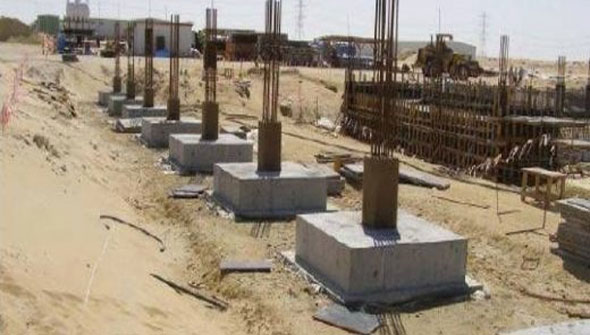Types of Foundation in Construction
- Concrete Cost Estimator
- Concrete Continuous Footing
- Landscape Bidding and Estimating
- Construction Cost Estimating
- Concrete and steel cost estimation
- Construction Cost Estimate Breakdown
- Construction Estimating Worksheet
- Home Construction Cost Estimate
- Estimate Pricing Sheet
- Sheet for General Contractor
- Construction Cost Estimate
- Labor Materials Cost Estimator
- Masonry Estimating Sheet
- Sheet for Building Contractor
- Construction Schedule Bar chart
- General Cost Estimator Sheet
- General Construction Estimate
- Building and Road Estimating Sheet
- Detailed expense estimates
- Door and Window Takeoff Sheet
- General Construction Cost Estimating Sheet

The type of foundation should be selected based on the following major factors:-
Foundation is graded as the shallow foundation and deep foundation.
Shallow Foundations: Foundations that are built at shallow depth belong to this category. The following are examples of shallow foundations.
1. Pad footings
2. Combined footings
3. Raft foundations
4. Strip footings
Deep Foundations: Foundations that are built to a deeper depth belong to this category. The following are the instances of shallow foundations.
1. Cast in-situ board files
2. Driven piles (precast piles)
3. Micro piles
Depending on the following factors, the type of foundation should be chosen :-
1. Importance of the Building
2. Lift of the Structure
3. Loads from Superstructure
4. Type of Soil
5. Adjacent Structures
6. Accessible Foundation Types
7. Construction Cost
Significance of the Building: The significance of the building also plays an important role in choosing the types of foundations. The structures which are less important or have less longevity, the foundation design should be less attended.
For instance, while choosing a temporary structure, the settlement of the foundation is not observed. The higher settlement is permitted.
Besides, a structure that is built up for repairing the banners/notices should not be designed restricting the settlement like a building.
Loads from Super Structure: The foundations undergo two types of loadings which range from vertical and horizontal loads.
Also Read: Common types of foundations for buildings
Besides, the loads enforced to the foundations, are influenced by the nature of the structure.
Type of the structure: In case the structure belongs to a building, dam, retaining wall, steel tower, etc., will it impact the structural loadings?
Height of the Structure: Specifically in buildings, the height is considered as a vital factor that can impact the loads on the foundations.
With the increased numbers of floors, the dead, and live loads on the foundation are also raised proportionately. Besides, when the height of the building is increased, wind loading also becomes higher. With the increased numbers of floors, the mass of the building leads to large base shear on the foundation.
For a retaining wall, the soil condition and the type of stability also impact the structural loads. The active pressure or rest pressure condition are also important factors that impact the loads on the foundations.
There are also other key factors like the type of soil, adjacent structures, cost of construction, and the span of the structure which can impact the selection of exact foundation types.

- Application of concrete calculator
- Roofing Calculator can streamline the roof estimating process
- House construction cost calculator
- Engineering column design excel spreadsheet
- Material Estimating Sheet with Excel
- Materials List and Cost Estimate Worksheet
- Concrete Slab Estimating Calculator Sheet
- Common types of foundations for buildings
- Online calculation of construction materials
- Estimating with Excel for the Small Contractor
- Concrete Beam Design Spreadsheet
- Virtual Construction Management app for construction
- Autodesk’s Project Skyscraper
- Reed Construction’s Reed Insight
- Manage your construction project documentation
- Costimator, the popular cost estimating software
- On Center Software for construction professionals
- Free Construction Estimating Software
- Plumbing Calc Pro
- Cost Estimate Worksheet
- HVAC Piping Quantity Takeoff Worksheet
- Construction Estimating Software Sheet
- Estimate Cost Templates
- Construction Punch List
- Construction cost estimating template consisting estimating basic
- Gantt Chart Template for Excel
- Download Civil Engineering Spreadsheets with Verification
- The Building Advisor Estimating and Budgeting Worksheet
- Spreadsheet for design of concrete bridge
- Construction Estimating Software Free








